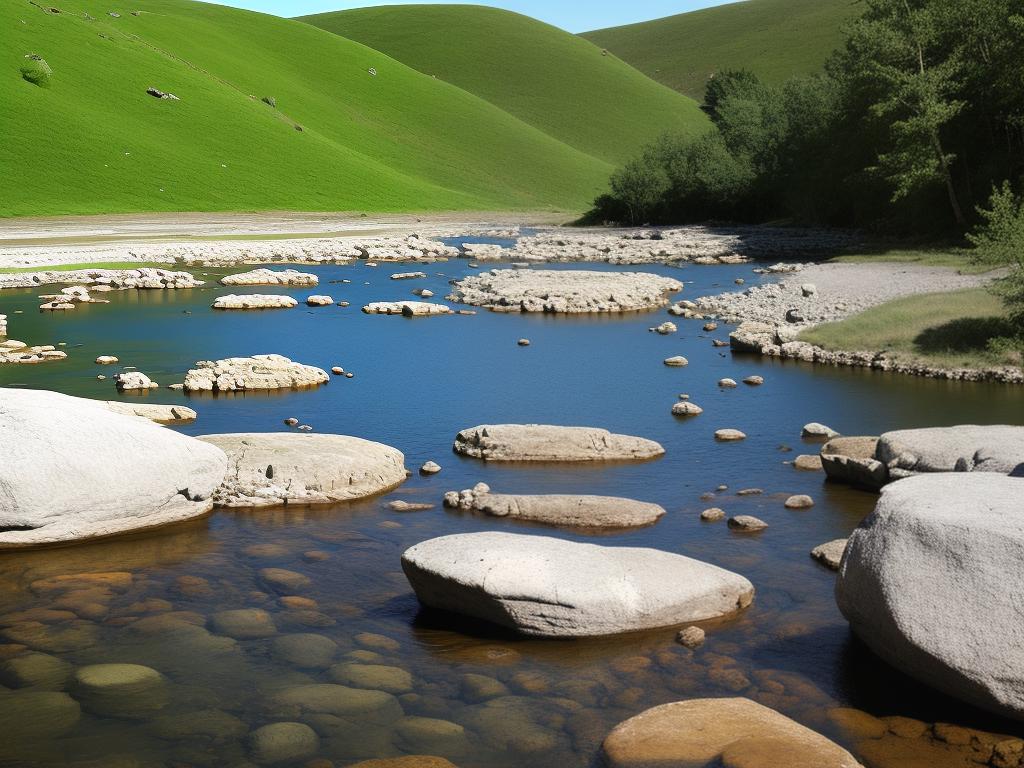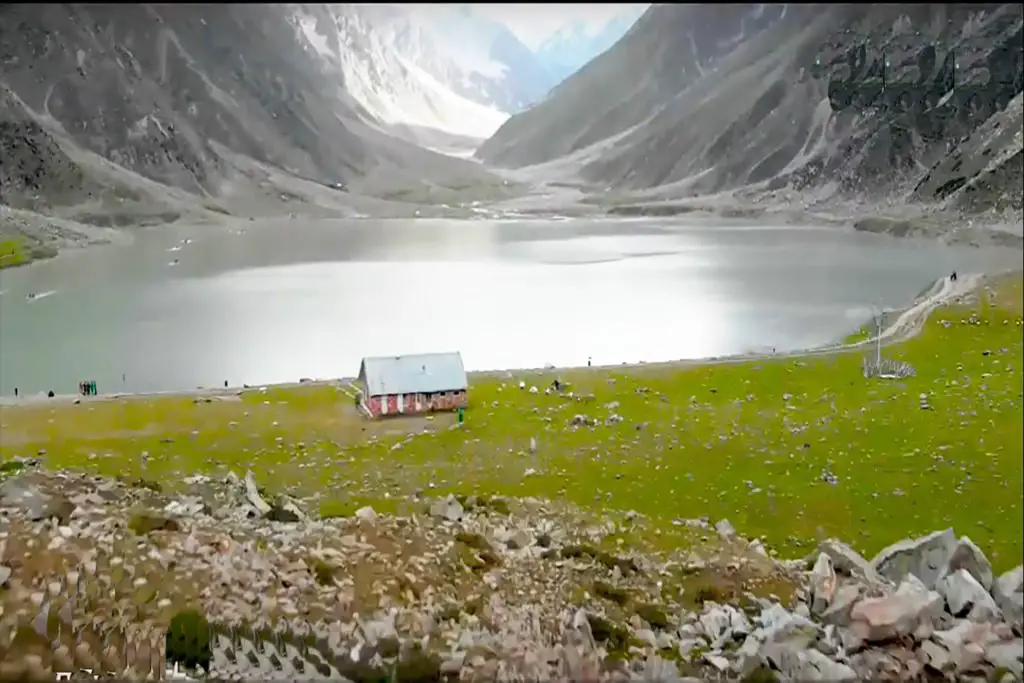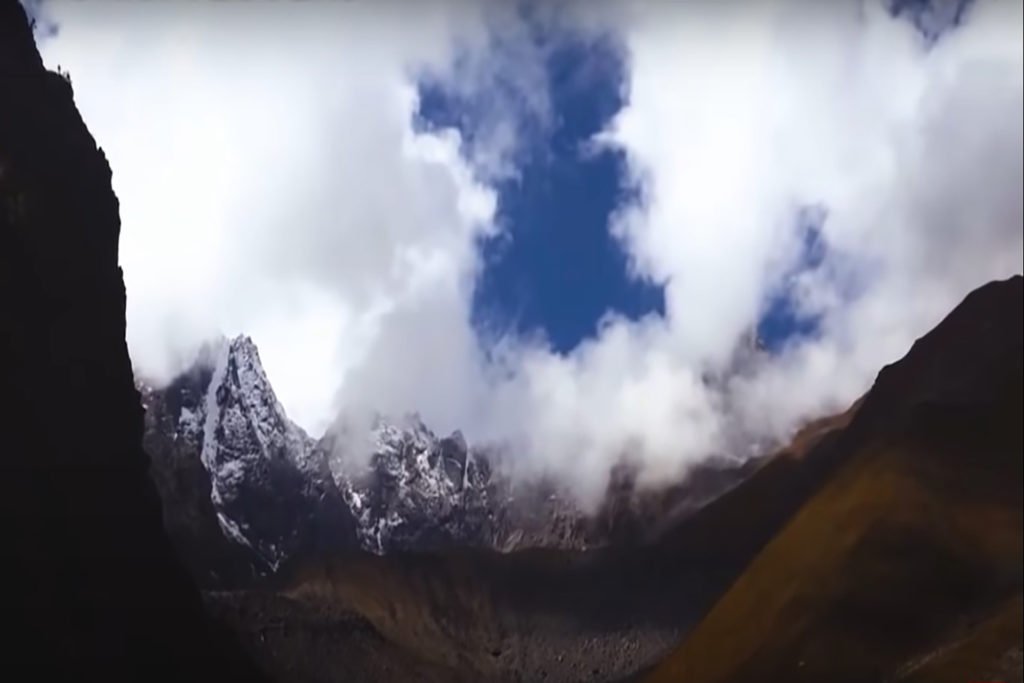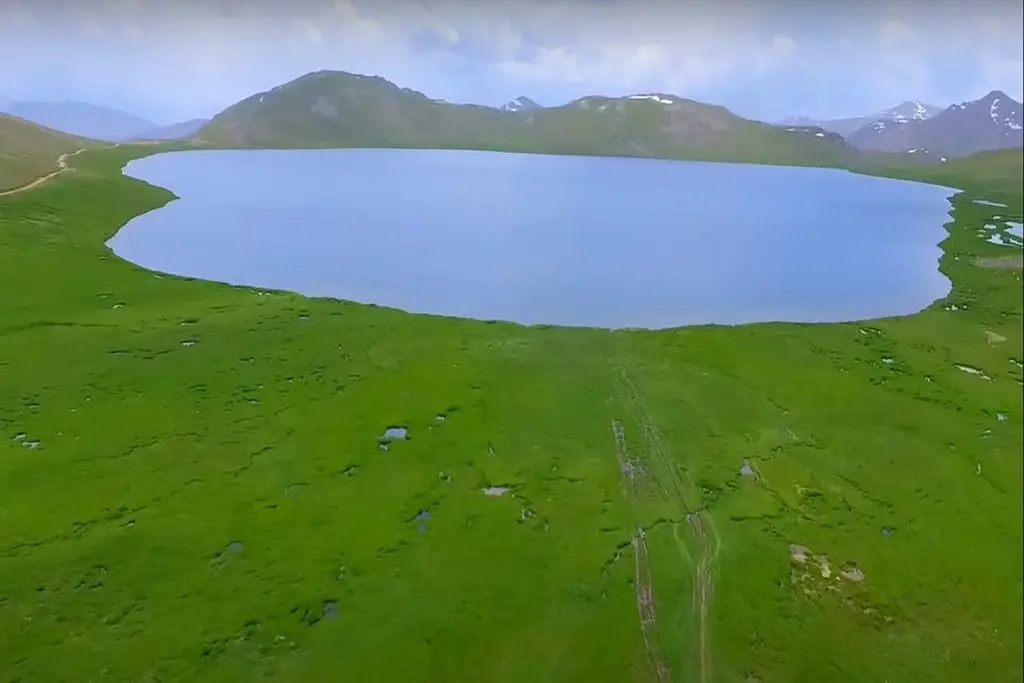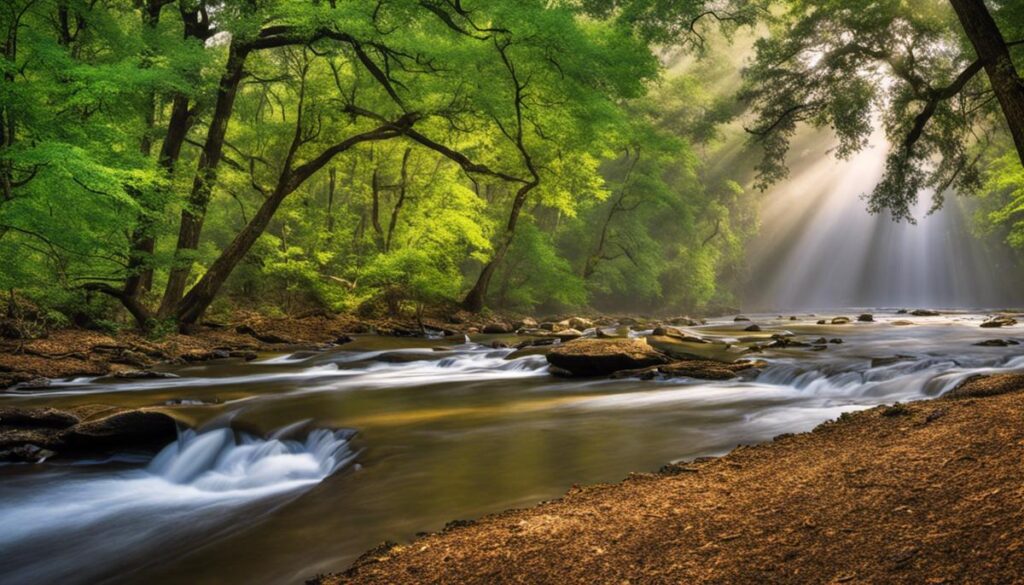The captivating Boiling River Yellowstone National Park, a rare geological phenomenon, traces its origin back to the unique volcanic activity beneath the Earth’s surface. The remarkable heat it carries from the ground beneath establishes a stark contrast with the frigid temperatures experienced by many river systems globally. Indeed, Boiling River is more than just a geothermal wonder; it’s a thriving ecosystem with a diverse array of wildlife adapted to its exceptional conditions. With the same, it’s no wonder why precautionary measures are needed to ensure the safety of visitors venturing near its warming waters, bearing such volatility in temperatures.
Origins of Boiling River
Origins of Boiling River
The Boiling River, located in Yellowstone National Park, is a stretch of the Gardiner River where hot water heated by geothermal activity enters the river, causing it to boil. The hot spring’s existence wasn’t documented until the late 19th century, despite native tribes living in the area for thousands of years before European exploration. It was officially recognized by park officials and made available for public soaking in 1916.
Volcanic Activity and the Boiling River
There is a widespread geothermal activity beneath Yellowstone National Park, being one of the largest volcanic systems in the world. Deep beneath the ground, molten rock, or magma, releases tremendous amounts of heat. This has turned Yellowstone into a hotbed of hydrothermal activity, with over 10,000 hydrothermal features, which include hot springs, geysers, mudpots, and fumaroles.
The colossal heat from the magma chamber that lies beneath the park is essentially the engine driving these phenomena, as it heats the ground water to boiling point, thereby giving the Boiling River its unique and namesake feature.
The superheated water travels through a system of small fractures in the rock, emerging as hot springs in the Boiling River. The heat in this water comes from the volcanic mantle plume, that extends deep into the Earth’s crust. This plume is precisely what fuels Yellowstone’s geysers, hot springs, and other thermal features.
In the Boiling River’s case, groundwater seeping down meets up with this geothermal heat, causing the water to boil and rise back through the surface, effectively turning it into a hot spring.
What Makes the Boiling River in Yellowstone so Unique?
One of the most fascinating geographical wonders in Yellowstone National Park is the Boiling River. It is a rare sighting where steam can often be observed ascending from the surface due to the interaction between boiling hot and cooler river water. This creates a remarkable and one of the largest swimmable hot springs in the U.S.
The formation of a boiling river is not as straightforward as merely being located above a volcanic hotspot. If it were so, boiling rivers would be a common phenomenon worldwide. What makes the Boiling River in Yellowstone unique is the precise balance of heat and water. The park is blessed with ample rainfall and snowfall, providing a copious water supply, and it is situated atop one of the planet’s hottest volcanic systems. This perfect synergy of conditions is hard to find anywhere else.
Even within Yellowstone, the right setting for a feature like the Boiling River to exist is uncommon. This is because the heat source required for such an occurrence—liquefied, moving magma—is not prevalent throughout the park.
Without a doubt, the Boiling River is an extraordinary natural spectacle attributable to Yellowstone’s vibrant geology that intrigues researchers and attracts visitors from around the globe.

Ecology of Boiling River
The Intriguing Ecosystem of Yellowstone’s Boiling River
The Boiling River holds a distinct and complex ecosystem in the realms of Yellowstone National Park. This environment, marked by extremely high temperatures, defies conventional survival theories. In spite of such harsh conditions, the river supports a diverse range of organisms, making it an incredibly unique natural habitat.
Microbial Life in Boiling River
The high temperature waters of Boiling River host a variety of thermophilic (heat-loving) microorganisms. These exceptional organisms, capable of surviving in temperatures above 70 degrees Celsius, perform crucial roles in the ecosystem, including cycling of nutrients and elements. Microbes also form vibrant microbial mats, which are visible as colorful streaks in the hot pools. These bacteria, known as thermophiles, use hydrogen sulfide, the gas responsible for the river’s “rotten egg” smell, for their metabolic processes.
Insect Life and Boiling River
Insects also play a fundamental part in the ecology of Boiling River. Various heat-tolerant insects inhabit the steamy shores of this hot river. Species like the firehole grasshopper, Yellowstone stonefly, and Capnia confusa are adapted to tolerate harsh temperature variations. These heat-resistant properties have attracted scientists to study their potential impacts on genetic research and entomology.
Bird Life around Boiling River
The Boiling River area is also home to a range of bird species. The geothermal features provide an open habitat, even in the heart of winter, drawing bird species such as the American dipper, Barrow’s goldeneye duck, and a variety of waterfowl. These birds adapt by shifting their diet towards aquatic insects and benefit from the constant temperature of the hot springs during Yellowstone’s ruthless winters.
Mammalian Life around Boiling River
The surrounding area of Boiling River in Yellowstone also supports a diverse variety of mammals. Species such as North American river otters, bison, and wolves have been sighted regularly. These mammals often use geothermally heated water for thermoregulation during cold winters. Among them, the North American river otter is thought to have an especially close relationship with this unique habitat.
Adapting to Extreme Conditions
All these organisms have adapted remarkably to the challenging conditions that Boiling River presents. They have evolved specific physical and biological adaptations to survive, thrive, and reproduce in these extreme conditions. These adaptations range from the capability of certain microbial life to utilize geothermal energy to the behavioral adaptation of mammals resisting the extreme cold by taking advantage of the geothermally heated water.
In its extreme conditions, the Boiling River embodies a rich and diverse ecology, demonstrating the dynamic adaptability of nature at its finest. Its uniqueness sets the stage for a natural laboratory for scientific inquiry. Researchers flock to this area to delve into and discover how life manages to evolve and adapt in such challenging settings, thereby expanding their understanding of survival boundaries.

Potential Risks and Precautions
Temperature Fluctuations of the Boiling River
Nestled within the expansive Yellowstone National Park, the Boiling River presents a fascinating hydrothermal phenomenon as it converges hot spring water with the much cooler river water. This natural interplay triggers significant variations in water temperature, with readings near the origin as blistering as 140 degrees Fahrenheit, tapering off to a more soothing 96-102 degrees Fahrenheit where the hot meets cold. Not only this, but seasonal shifts also contribute to this dance of temperatures; after bouts of heavy rain or a sudden snowmelt, for instance, the river’s temperature can plummet. Conversely, spikes in geothermal activity can cause an abrupt surge in the water’s heat level.
Potential Dangers and Accidents at the Boiling River
Anyone who decides to soak in the Boiling River must be aware of the potential dangers. The river’s bottom is naturally rocky and uneven, increasing the risk of slips, trips, and falls. Additionally, the turbulent current of the Boiling River, especially during periods of high water, can pose a risk for weak or unexperienced swimmers.
Hazards also arise from the fluctuating temperatures. If bathers stray too close to the hot springs’ source, they risk burn injuries due to the potentially scalding water. Conversely, hypothermia is a concern if bathers stay in the cooler parts of the river for too long.
Rules and Regulations to Ensure Safety
The National Park Service has established strict rules and regulations to ensure visitor safety at the Boiling River. These include keeping the area closed from dusk to dawn, prohibiting alcohol, and asking visitors to stay within the designated bathing area, which prevents individuals from venturing too close to the dangerously hot springs.
Additionally, swimming aids such as life jackets, floats, and tubes are not permitted due to the risk they pose in the unpredictable river currents. Certain areas may be temporarily closed due to high water or increased geothermal activity, which is monitored regularly by park officials.
Staying Safe at the Boiling River
When it comes to visits to the Boiling River in Yellowstone, ensuring personal safety of visitors is paramount. It is advisable to wear water-shoes that provide a good grip to avoid slipping on the rock-strewn riverbed. It’s always a good idea to check the water temperature by hand or foot before fully entering the water for any sudden temperature changes.
Children venturing into or near the water should be strictly supervised at all times, and all swimmers should remain aware of their own personal limits, not venturing beyond a comfortable and safe distance. It’s also necessary to avoid submerging the head underwater to prevent contraction of amoebic meningitis, an infection of the brain caused by a rare microorganism that thrives in hot springs.
Consideration should be given to any pre-existing health conditions, such as heart-related issues or pregnancy, before deciding to take a dip in the Boiling River due to the potential stress that hot water can place on the body.

Importance and Conservation
The Boiling River: Yellowstone National Park’s Hotspot
Yellowstone National Park’s Boiling River holds significant ecological, geological, and recreational value. As one of the rare hotspots where geothermally heated swimming is permitted within the park, the Boiling River serves as a significant draw for tourists. This extraordinary body of water, where hot and cold waters from the Boiling River and the Gardner River blend, acts as a natural hot tub and attracts thousands each year. Besides being a popular recreation spot, the Boiling River plays a crucial role in maintaining the temperature of neighboring waters, influencing local biodiversity, and adding to the uniqueness of Yellowstone’s geothermal phenomena.
Current Threats to the Boiling River
Like many natural hot springs, the Boiling River faces several threats that could potentially undermine its status as a Yellowstone treasure. The biggest threat comes from invasive species, both plant and animal, that can alter the fragile ecosystem. Increased levels of pollution and litter from visitors also pose a risk to its pristine condition. Overuse is another key concern; high influxes of visitors can cause erosion, damage to surrounding vegetation, and can disturb local fauna. Climate change may impact the geothermal processes that maintain the river’s temperature, leading to potential alterations in the river’s characteristic features.
Conservation Programs and Efforts
Various conservation programs and efforts are underway to protect and preserve the Boiling River for future generations. Yellowstone National Park authorities are putting significant resources into the management of visitor impact and invasive species mitigation. The National Park Service works tirelessly to educate visitors about the importance of not disturbing the park’s natural features and carrying out all litter. Under the Yellowstone Resources and Issues Handbook, authorities have implemented measures to protect the park’s thermal features, including the Boiling River.
Individual Roles in Conservation
Individuals can play a significant role in helping to conserve the Boiling River. These actions can include adhering to designated trails when visiting to reduce soil erosion, avoiding any physical contact with the thermal features, not discarding any trash within the park, and not introducing any foreign substances or species into the river. Visitors are also encouraged to report any observed violations of park regulations to Park Rangers. Volunteering for clean-up activities organized by various environmental groups, donating to conservation funds, and spreading awareness about the importance and uniqueness of the Boiling River are additional actions that can be undertaken by individuals to help with the conservation efforts.

Boiling River’s idiosyncratic nature binds with Yellowstone National Park’s very identity, underscoring the importance of its preservation. The ongoing conservation programs focus on mitigating the threats it faces, with further research and concerted efforts on the horizon. As appreciation and respect towards our planet’s natural wonders increase, so too should the responsibility to help in these preservation efforts. Just as the Boiling River has captivated and intrigued minds over centuries, it continues to do so, reminding us of its enduring significance, the magic of Mother Nature and our duty to help safeguard these treasures for future generations.
Experience the power of Writio: an AI content writer for publishers and blogs! This article was crafted by Writio.

